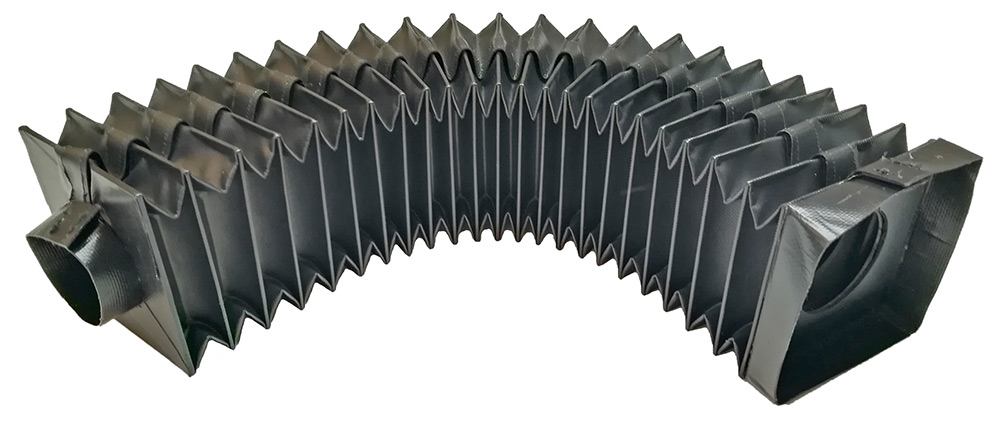In industrial environments, safety is not just a matter of regulatory compliance, but a priority that protects the lives of workers and ensures operational continuity. Although they often go unnoticed, components such as bellows, covers and specific guards play a crucial role in preventing accidents and improving ergonomics. In this article, we explore how the design of these elements can make a difference in industrial safety.
Safety as a priority in industrial design
Industrial design not only seeks functionality and efficiency, but also to minimize risks in the workplace. The incorporation of protective elements, such as bellows and covers, not only protects machinery, but also ensures that operators work in safe and comfortable conditions.
Some of the main risks in industrial environments include:
● Exposure to moving components that can cause entrapment.
● Splashes of corrosive liquids or oils.
● Damage from abrasive particles or dust.
● Injuries resulting from awkward postures or non-ergonomic working conditions.

Bellows and their role in industrial safety
Bellows are flexible components designed to protect moving parts, such as cylinders, shafts or spindles, from external contaminants. Their design also directly contributes to improving industrial safety:
1. Prevention of entrapment accidents
Moving components, such as rotating spindles or shafts, pose a significant risk of entrapment for workers. Bellows act as a physical barrier that prevents direct contact with these moving parts.
2. Containment of contaminants and hazardous liquids
In environments where aggressive chemicals or lubricants are handled, bellows protect both mechanical parts and operators, preventing leaks or splashes that could cause burns or injuries.
3. Resistance to extreme conditions
The use of materials such as silicone, polyurethane or PTFE in bellows ensures that they can withstand high temperatures, humidity or exposure to chemicals, maintaining safety at all times.
Protective Covers: Barriers Against Physical Hazards
In addition to bellows, protective covers are another essential element in the safe design of machinery. These solutions are designed to:
● Protect against abrasive particles and debris: Especially useful in industries such as mining or construction.
● Insulate heat or electricity: Some covers have thermal or electrical properties that protect operators from burns or shocks.
● Improve visibility: With clear designs or visible indicators, they allow workers to monitor operations without compromising their safety.
The impact of design on industrial ergonomics
Ergonomics is a key factor in industrial safety, reducing the incidence of musculoskeletal injuries and improving productivity. Well-designed components such as bellows and covers also contribute to a more ergonomic environment:
1. Reduced physical strain
Flexible bellows allow smooth, precise movements in mechanical parts, reducing the need for manual adjustments or repetitive tasks that could cause fatigue.
2. Proper postures
Well-designed, tight-fitting covers facilitate access to machines and tools, eliminating the need to adopt awkward postures during work.
3. Minimizing vibrations and noise
Some bellows and covers are designed to absorb vibrations, reducing exposure to conditions that can cause vibration injuries or long-term hearing loss.

Conclusion: Safe design, safe environments
Smart design of industrial components such as bellows and covers not only protects machinery, but also saves lives and improves ergonomics in work environments. Incorporating these solutions into your equipment is an investment in safety, efficiency, and regulatory compliance.
Are you looking for design solutions that prioritize safety in your industry?
Contact us to find out how our custom components can protect your workers and improve productivity in your plant.


